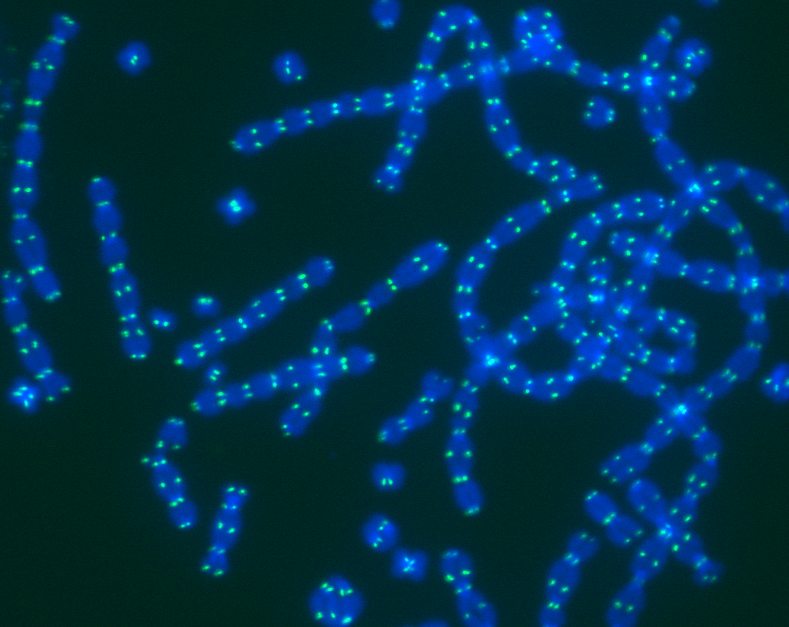Our identification of MMSET as a regulator of non-homologous end-joining (NHEJ)-mediated fusion of deprotected telomeres and our subsequent efforts to understand this role of MMSET, were initiated already over 10 years ago. My lab was just underway and after I tried multiple approaches in the preceding years myself, my first students and I had finally succeeded in developing conditions for a cell-based screen that would allow unbiased identification of factors contributing to genomic instability following fusion of uncapped telomeres by NHEJ.
A concise set of short hairpin RNAs, generously provided by a nearby lab and targeting methyltransferases, was used for one of the first test runs. Methyltransferases were not clearly linked to DNA repair at that time, but we hypothesized that anything that modifies chromatin would make a potential candidate for affecting recognition and repair of deprotected chromosome ends at telomeres. This turned out a good guess when MMSET emerged as a clear regulator of NHEJ at deprotected telomeres from our mini screen. We were extra excited by this as MMSET was known to be dysregulated in multiple cancers and, most notably, to be causally linked to multiple myeloma in which MMSET is overexpressed as result of a t(4;14) translocation.
While underway in our characterization of the underlying molecular mechanisms, we woke up one morning with reading that MMSET was found to control DNA repair by promoting 53BP1 localization to sites of damage by catalyzing H4K20 dimethylation, one of the histone marks bound by 53BP1. A finding that could easily explain why our MMSET-depleted cells were inefficient in joining uncapped telomeres, as 53BP1 is critical for this, and hence would quickly complete our efforts to understand MMSET activity in NHEJ at telomeres.
However to our great surprise, we could not detect any effect on 53BP1 accumulation to uncapped telomeres in our MMSET-depleted cells. Subsequent reports by other groups, also not seeing effects of MMSET on 53BP1 in different experimental settings, were reassuring that we were not hampered by a technical problem. But if not via 53BP1, then what is MMSET doing that facilitates telomere NHEJ? This turned out tough to answer and made the project go through several rounds of being temporarily abandoned and being brought to life again.
Here we have reported our conclusion that MMSET specifically affects classical NHEJ, not alternative NHEJ, at deprotected telomeres through its methyltransferase activity towards H3K36. An activity that leaves upstream control of DNA repair unperturbed and likely affects very late steps in end-joining.
Besides enhancing understanding of the dependencies for NHEJ at exposed chromosome ends, our findings are relevant for understanding the development and treatment of cancers with dysregulated MMSET. Elevated MMSET in (pre-) cancerous cells might contribute to genomic instability by enhancing inappropriate or faulty NHEJ at DNA DSBs or at telomeres that become deprotected following telomere maintenance defects. Furthermore, enhanced NHEJ in cells overexpressing MMSET could decrease the efficiency of DNA damaging cancer treatments.




Please sign in or register for FREE
If you are a registered user on Research Communities by Springer Nature, please sign in